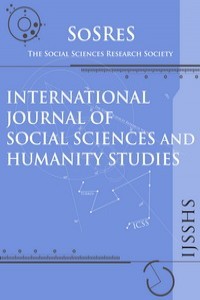REFORMING WITHOUT PERSONNEL IN NIGERIA: IMPLICATION OF “OWNERSHIP GAP” IN IMPLEMENTING THE MONETIZATION OF FRINGE BENEFITS IN PUBLIC SECTOR
REFORMING WITHOUT PERSONNEL IN NIGERIA: IMPLICATION OF “OWNERSHIP GAP” IN IMPLEMENTING THE MONETIZATION OF FRINGE BENEFITS IN PUBLIC SECTOR
___
- Abdusalmi, A (1999) “Accountability and policy making in the local government System” In Obasi, I.N and N.O.Yaqub (eds) Local government Policy making and execution in Nigeria. Ibadan: Sam Bookman Publishers.
- Bello(2004) Monetization: Top civil servants corner vehicles.(All Africa.com)
- Borins, S. (1994). ‘Government in Transition: A New Paradigm in Public Administration’.Toronto: Commonwealth Association for Public Administration and Management.
- Bernnet R T (1992) Dictionary of Personnel and Human Resources Management. Longman Group UK Ltd.
- Esenwa, F.O. (2003) Paper presented at National Quantity Surveyors
- Başlangıç: 2009
- Yayıncı: Sosyal Bilimler Araştırmaları Derneği
CONSUMER CHARACTERISTICS IN THE INSTITUTIONAL CATERING ACCORDING TO PRIMARY RESEARCH
Mónika FODOR, ágnes CSİSZÁRİK-KOCSİR, András MEDVE
STOCKHOLDING AND FINANCIAL LITERACY IN THE FRENCH POPULATION
Luc ARRONDEL, Majdi DEBBİCH, Frédérique SAVİGNAC
DOES OIL INCOME IMPEDE DEMOCRATIZATION IN MUSLIM-MAJORITY COUNTRIES?
Osman Nuri ARAS, Elçin SÜLEYMANOV, Ayaz ZEYNALOV
THE IMPORTANCE OF HEALTH EXPENDITURES ON SUSTAINABLE DEVELOPMENT
Melissa QUETULİO-NAVARRA, Anke NİEHOF, Wander Van Der VAART, Hilje Van Der HORST, Suliyanto Se MM
PERFORMANCE OF EMERGING MARKET DIVERSIFIED EQUITY FUNDS
Cem Güçel, İsmail Tokmak, Hakan Turgut
